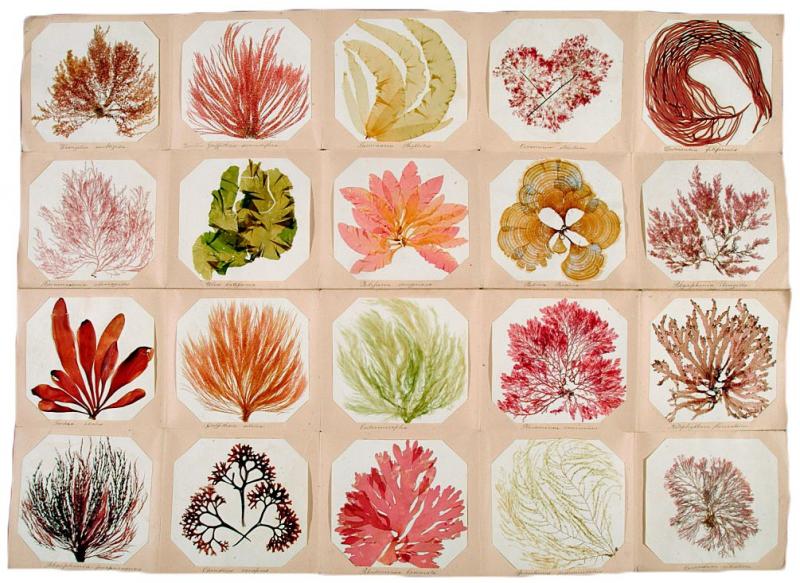
The science of Phycology, or the study of seaweeds, was effectively started by Victorian enthusiasts in the mid-1800s, who assembled collections of pressed seaweeds, and compiled artistic presentations (R, top).
Everyone's seen (and smelled) the seaweed on a beach, Coastwise members more than most, but the vast majority of us have no idea of the huge number of variations, and only a vague idea of the difficulty of identifying most of them.
Into this breach leapt Jay Nicholson, who gave Coastwise members an expert whistle-stop tour of the world of marine algae.
Seaweeds are photosynthesising organisms, but they are classified taxonomically as algae, in the kingdom of Protists, whereas terrestrial plants occupy their own Plant kingdom.
Algae have stipes, holdfasts and fronds, to match the equivalent plant stems, roots and leaves.
In France, seaweeds are actively marketed as a food (R, bottom)
There are 647 varieties in the UK, but this only represents c.6% of those in the world. Variations are being identified constantly, many are being renamed following use of genetic typing techniques, and some can only be identified correctly by, e.g., counting the cells between braching nodes using a microscope. Others may be up to 5m long (R, 2nd and 3rd pics). Yes – a daunting field to venture into !
However, Jay, using excellent photos and photomicrographhs, ran through green, brown and red weeds pointing out the habitat, key characteristics and identification hints.
[Top Photo courtesy of Collector's Weekly, others Jay Nicholson]

